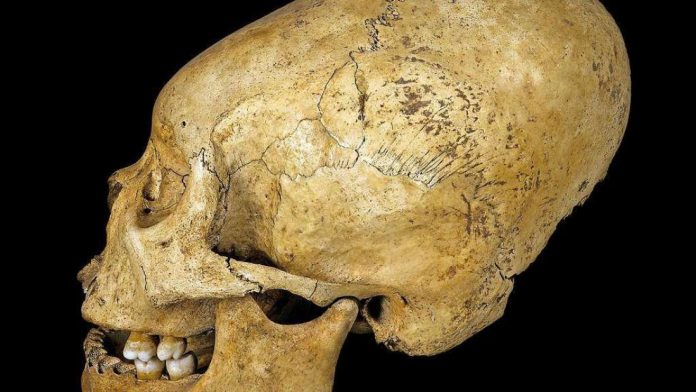Ancient Peruvian elites bound their babies’ heads to planks of wood 900 years ago to give them elongated ‘alien’ skulls as a mark of social status.
A new study, published in the journal Current Anthropology, has taken a look at elongated skulls of the Collagua people who lived in the Colca Valley in south-eastern Peru around 1100 to 1450 CE.
Through measuring carbon and nitrogen isotope analysis of the bones, the researchers showed that the Collagua women with elongated distended heads ate a more varied diet, indicating that they were perhaps more privileged. These remains of these women also appeared to have fewer signs of physical violence against them, once against suggesting that they were from a higher echelon of society.
The Collagua were persistently under the threat from the Inca Empire around this time. For the women to be proudly displaying your privilege with strange skulls might have also have been particularly prominent during times of social strives and war, as it acted like a symbol of their collective identity, just like a nation proudly waving a flag.
The study also made clear that more and more skulls were being elongated, even among the lower classes, as the pressure from the Inca Empire grew. Perhaps they were looking for a sense of belonging during a time of strife?
“In times of crisis and social upheaval, the creation of new kinds of collective identity can strengthen or undermine political reintegration,” the study author, Matthew Velasco of Cornell University, notes.
“It may have promoted cohesion among local elites and facilitated cooperation at higher levels of inclusiveness to coordinate agropastoral exchange, manage irrigation, or mobilize against outside forces, including (but not limited to) the encroaching Inka state.”
Artificial cranial deformations usually involve tightly binding a baby’s squishy head with bandages or clamping it into between wooden planks in order to distort its growth. This is just one insight into one culture’s use of elongated skulls, so it doesn’t necessarily represent all instances of it. After all, it occurred in countless different groups throughout history.
Nevertheless, the majority of archaeologists believe that this practice often had something to do with social status and the sense of belonging to a group. Sorry, there’s still no word on the alien connection yet!















